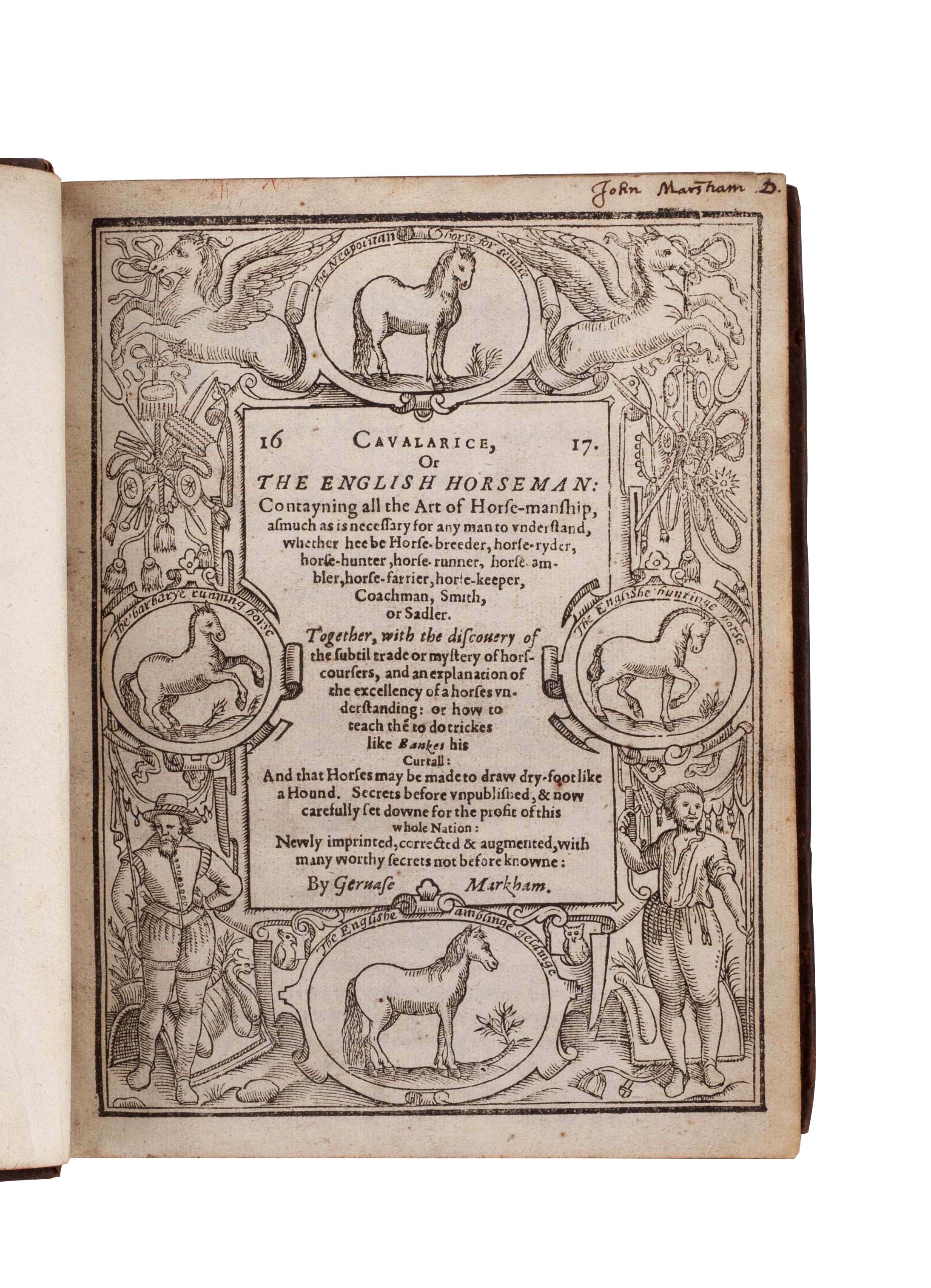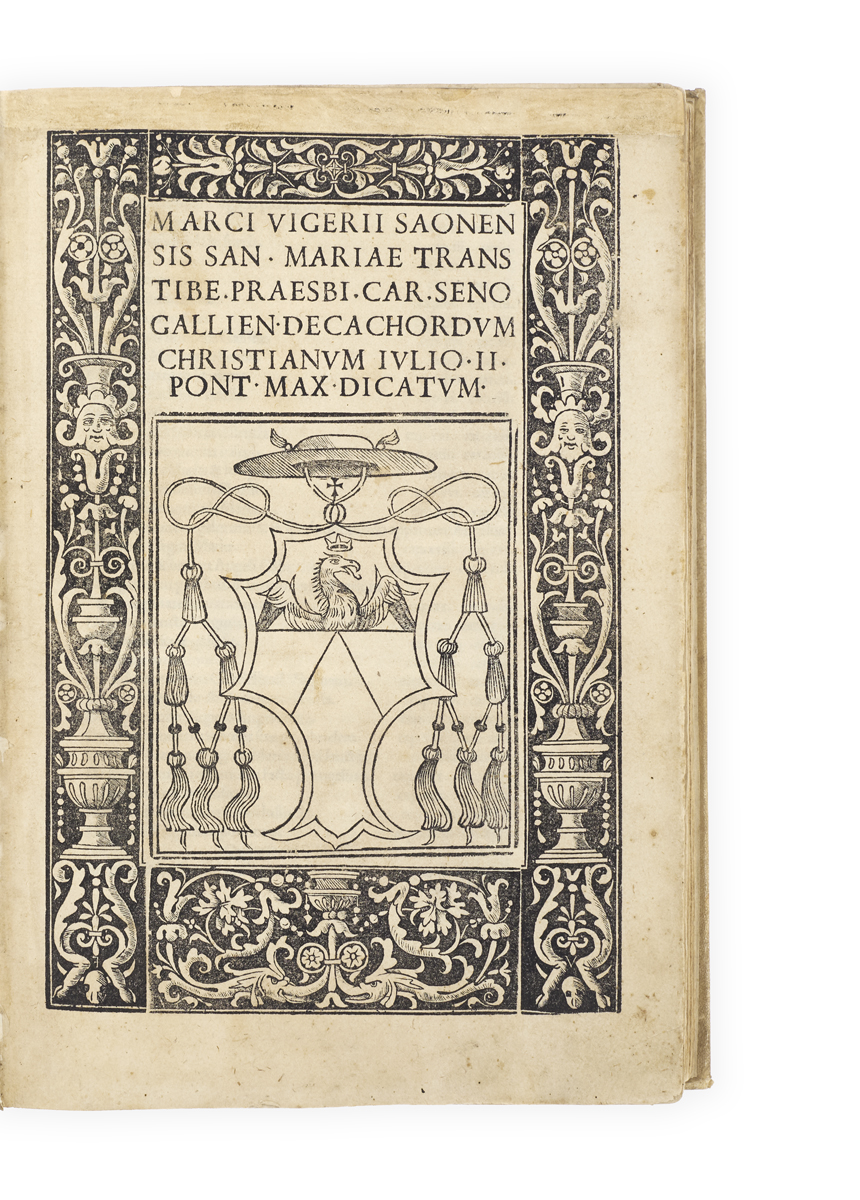
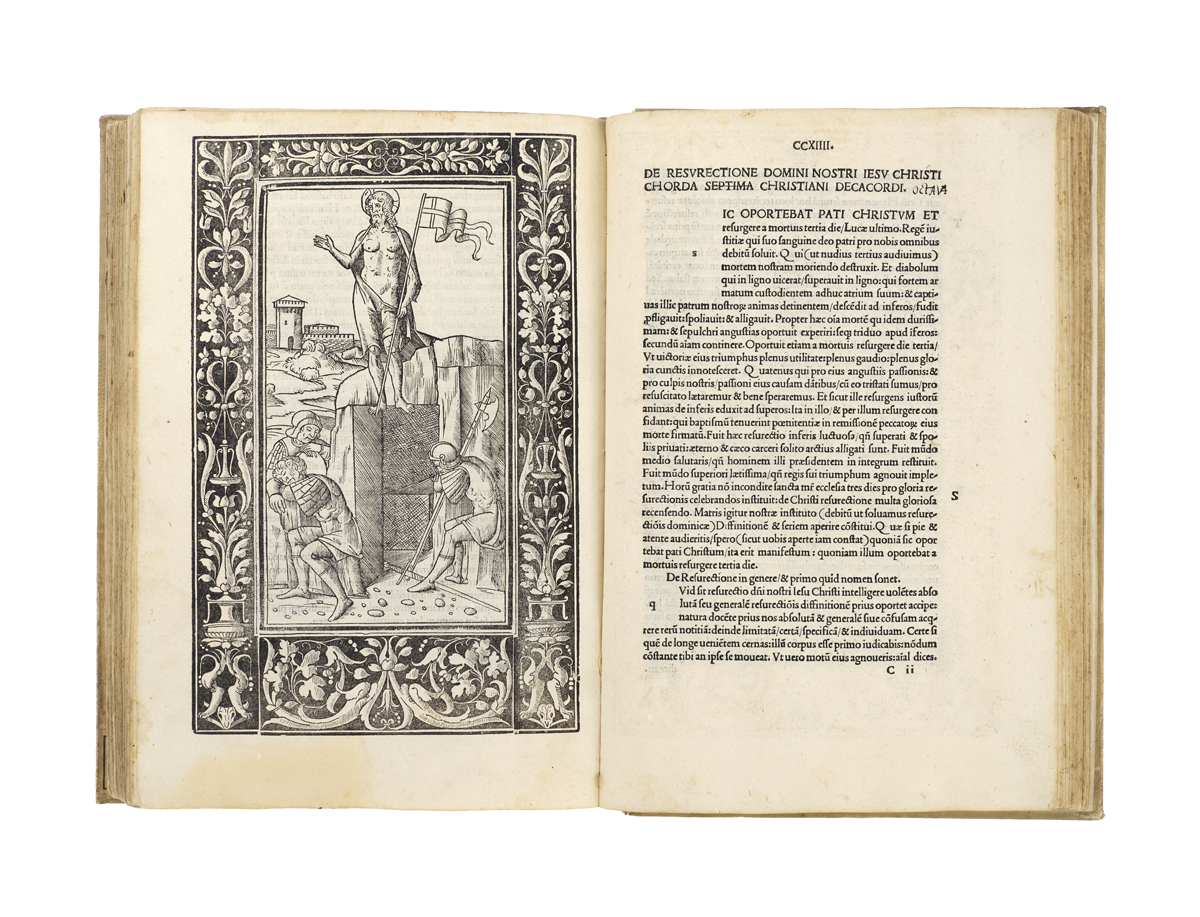
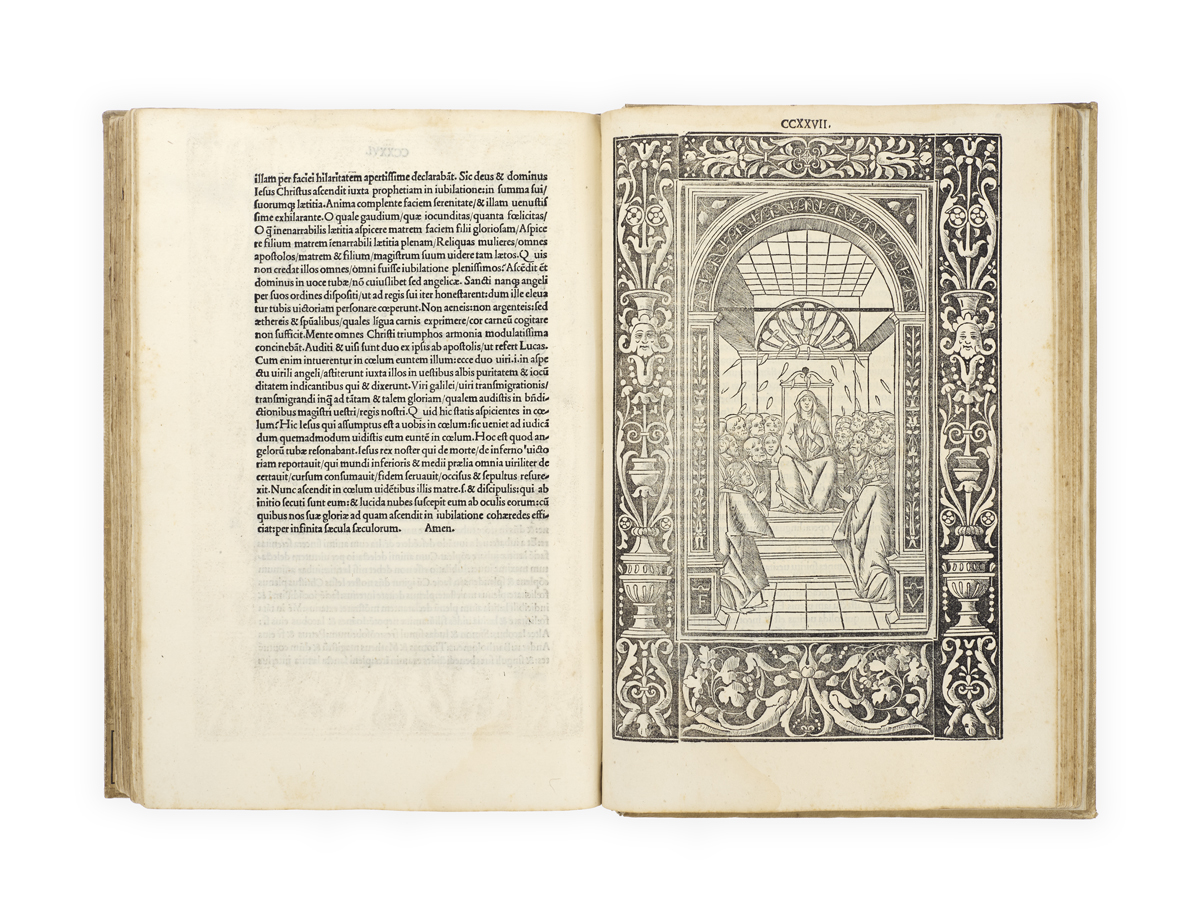
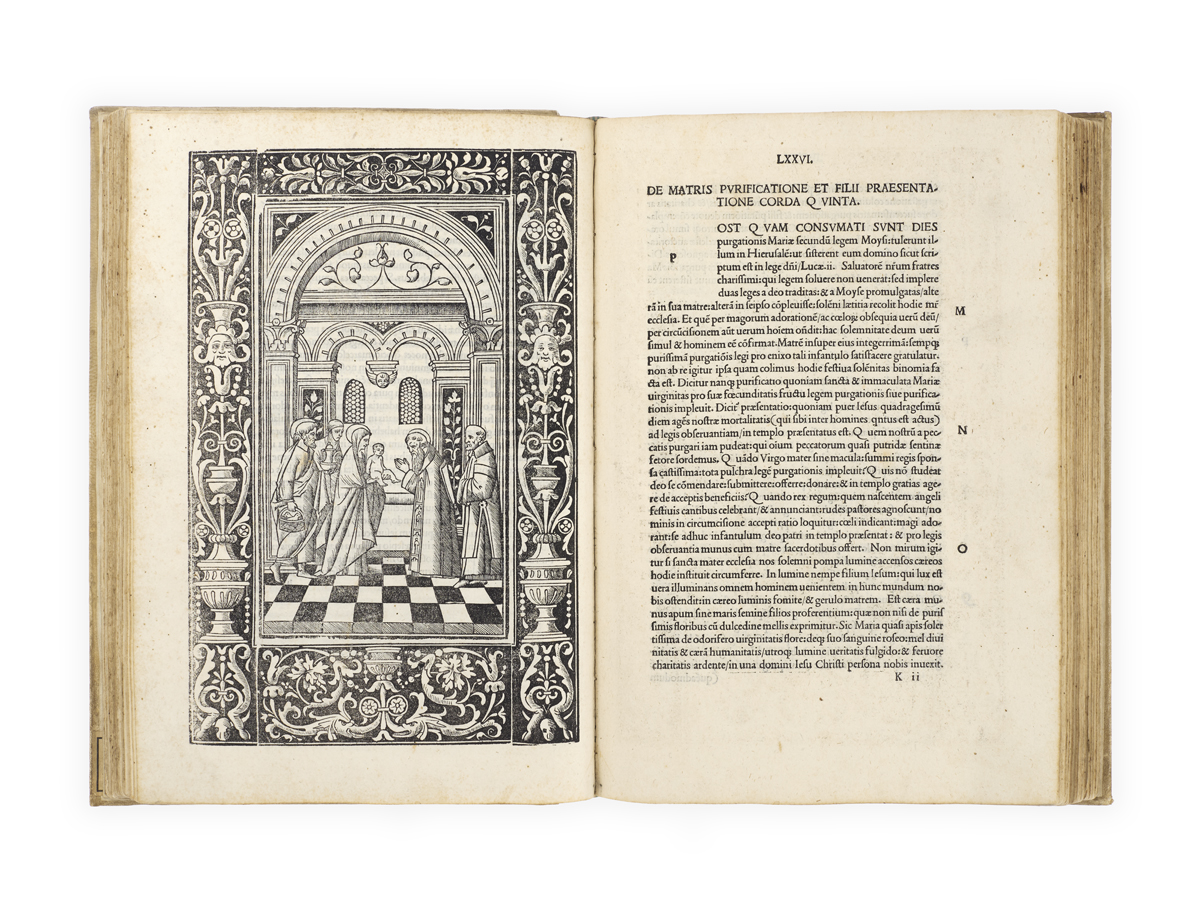
THE FINEST BOOK PRINTED BY SONCINO
VIGERIUS, Marcus.
Decachordum Christianum, Iulio II Pont. Max. dicatum.
Fano, Girolamo [Gershon] Soncino, 10 August 1507.
Folio, ff. [viii, with blank aa8], CCXLVI, [16]; engraved title with author’s coat of arms within elaborate border, 10 full-page illustrations (metalcuts?) all within white-on-black borders, and 33 mostly criblé images in text (of which 6 repetitions); title leaf re-hinged and re-margined at head, closed tear to foot of f. L (old repair), closed marginal tear to last leaf (repaired), a few small repairs to gutter margins, some light foxing and toning, occasional small marks, light marginal damp-staining towards end; very good in nineteenth-century vellum over boards, gilt-lettered spine label, manuscript title along lower edges; some light wear and marks; book label of Leo S. Olschki and later German shelflabel to front pastedown.
First edition, a masterpiece of Italian renaissance printing and illustration and the finest product of the Soncino press at Fano.
Despite their fine execution, the attribution of the large engraved scenes (proposed by Mortimer as metalcuts) from the Life of Christ remains controversial. The initials ‘FV’, which appear in the Pentecost (the final image of the sequence) and in one of the two alternating designs for borders, have led to attributions to Florio Valvassore. This is rejected by Essling, who points instead to the ‘L’ in the Nativity and suggests the former initials represent ‘Fano urbe’. Some of the blocks were later reused in other works: the Nativity block was reused by Luc’Antonio Giunta for his 1511 Bible, where several new cuts are likewise monogrammed ‘L’; the Annunciation block appeared in Adria’s De laudibus virtutibus, printed in Palermo in 1515 by Giovanni and Antonino Pasta.
The smaller cuts, depicting the Passion with distinctive criblé backgrounds, are likely the work of a separate, similarly unidentified hand. Of the thirty-three scenes, six are repeated; curiously, one makes its second appearance with Christ’s hand excised and another inserted to show a different gesture; in another the head is visibly a substitution, but does not appear in another configuration elsewhere in the book.
Marco Vigerio della Rovere (1446–1516) joined the Franciscan Order while his great uncle Francesco della Rovere (the future Sixtus IV) was Minister-General of the order. A professor of theology first at the University of Padua and then, from 1474, in Rome, Vigerio was elected Bishop of Senigallia in 1476 before being made a cardinal in 1505 by his cousin, Julius II, to whom this work is dedicated.
Essling part I, vol. II, p. 145, n. I; Mortimer 537 (Soncino’s ‘finest book’); Sander 7589.
